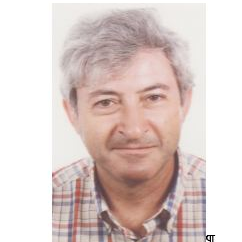Numerical Methods and Measurements in Antennas and Propagation
A special issue of Electronics (ISSN 2079-9292). This special issue belongs to the section "Microwave and Wireless Communications".
Deadline for manuscript submissions: closed (15 February 2022) | Viewed by 51339
Special Issue Editors
Interests: numerical methods and measurements in electromagnetics; antennas; and propagation
Special Issue Information
Dear Colleagues,
In wireless communications systems, the antennas perform two very important functions, adapt the signal that leaves the transmission lines of devices to free space, and direct the radiation of microwave energy in the desired directions of space. Antennas also allow spatial multiplexing of the signal to give greater capacity to wireless transmissions to accommodate the multitude of users and devices, which is critical for the wireless internet (Internet of Things - IoT). From the first cellular deployments, 2G, 3G, 4G to current 5G deployment and the emerging satellite communications, all systems depend on the development of new antennas. The antennas are passive devices whose proper design would relax the requirement of front-end elements . An improvement on antenna gain reduces the gain requirement on the transmitter RF Power-Amplifier, which is a complex active device. Similarly, on the receiver side, it can reduce the stringent noise figure requirement of the Low-Noise-Amplifier.
Design and analysis of antennas involve the resolution of Maxwell's equations with complex boundary conditions, and in many cases, numerical techniques are the only option. Since the end of the 80s, there has been a strong development of numerical techniques in parallel with the growth of the computational capacity of computers. Firstly, the application of the Finite Elements Method (FEM) and Finite Differences, which already had a long tradition in the analysis of mechanical structures. Then the Boundary Element Method, (BEM), Transmission Line Matrix (TLM) and finally, a new numerical technique emerged especially and specifically to solve Maxwell's equations, FDTD or Finite Differences in the Time Domain. All these techniques with their variants were applied to the design, analysis and development of microwave devices and antennas.
Experimental characterization of antennas is a sophisticated task that requires highly specific installations depending on the type of measurement, the dimensions of the antenna relative to the wavelength, and the frequency of measurement. In this special issue the topics of interest include, but are not limited to:
- Techniques FDTD, TLM, FEM, BEM and their variants in the numerical modeling of antennas.
- Advanced techniques for numerical modeling of antennas.
- Antenna measurement systems in near field with transformation to far field.
- Compact Range measurement systems.
- Advanced Antenna measurement systems.
- Phased Array Antenna systems.
Prof. Dr. Enrique A. Navarro-Camba
Prof. Dr. Nagula Sangary
Guest Editors
Manuscript Submission Information
Manuscripts should be submitted online at www.mdpi.com by registering and logging in to this website. Once you are registered, click here to go to the submission form. Manuscripts can be submitted until the deadline. All submissions that pass pre-check are peer-reviewed. Accepted papers will be published continuously in the journal (as soon as accepted) and will be listed together on the special issue website. Research articles, review articles as well as short communications are invited. For planned papers, a title and short abstract (about 100 words) can be sent to the Editorial Office for announcement on this website.
Submitted manuscripts should not have been published previously, nor be under consideration for publication elsewhere (except conference proceedings papers). All manuscripts are thoroughly refereed through a single-blind peer-review process. A guide for authors and other relevant information for submission of manuscripts is available on the Instructions for Authors page. Electronics is an international peer-reviewed open access semimonthly journal published by MDPI.
Please visit the Instructions for Authors page before submitting a manuscript. The Article Processing Charge (APC) for publication in this open access journal is 2400 CHF (Swiss Francs). Submitted papers should be well formatted and use good English. Authors may use MDPI's English editing service prior to publication or during author revisions.
Benefits of Publishing in a Special Issue
- Ease of navigation: Grouping papers by topic helps scholars navigate broad scope journals more efficiently.
- Greater discoverability: Special Issues support the reach and impact of scientific research. Articles in Special Issues are more discoverable and cited more frequently.
- Expansion of research network: Special Issues facilitate connections among authors, fostering scientific collaborations.
- External promotion: Articles in Special Issues are often promoted through the journal's social media, increasing their visibility.
- e-Book format: Special Issues with more than 10 articles can be published as dedicated e-books, ensuring wide and rapid dissemination.
Further information on MDPI's Special Issue polices can be found here.






